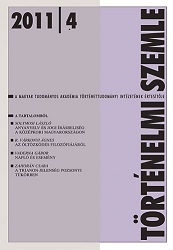Wesselényi Ferenc, Lippay György és Balassa Imre vitája a Pest megyei főispánságról
The Debate between Ferenc Wesselényi, György Lippay and Imre Balassa about the Lord-Lieutenancy (főispánság) of Pest County
Author(s): László Péter SchramekSubject(s): Local History / Microhistory, Political history, 16th Century
Published by: Magyar Tudományos Akadémia Bölcsészettudományi Kutatóközpont Történettudományi Intézet
Keywords: Ferenc Wesselényi; György Lippay; Imre Balassa; Ispán;
Summary/Abstract: The administration of the county of Pest differed in the middle ages from that of other counties in Hungary. Because of the vicinity of the capital, Buda (today Budapest), it had no ispán (comes) at its head, who would normally supervise the execution of royal orders, only szolgabírák (judices nobilium). This situation was profoundly modified in 1655, when king Ferdinand III appointed count Imre Balassa, captain of the castle of Gyarmat, as fõispán (supremus comes) of the county of Pest. Through his wife, Balassa was related to György Lippay, archbishop of Esztergom. // The county assembly protested against this encroachment upon its privileged status, and in this was supported by palatine Ferenc Wesselényi, holder of the second highest office after the king. The assembly could also count on the support of György Szelepcsényi, bishop of Nyitra and Hungarian chancellor, who was involved in a conflict with Imre Balassa because of the disputed possession of an estate. Yet the ruler, advised by György Lippay, insisted on his decision, and thus Balassa was invested with his office early in 1656. // In 1657 Imre Balassa led a raid into the territory under Ottoman occupation, which ended with catastrophic results. The captain of Gyarmat was consequently removed from his position in the army, but in the beginning of 1659 he recovered it thanks to the intervention of an unknown patron.
Journal: Történelmi Szemle
- Issue Year: 2011
- Issue No: 04
- Page Range: 537-567
- Page Count: 31
- Language: Hungarian

